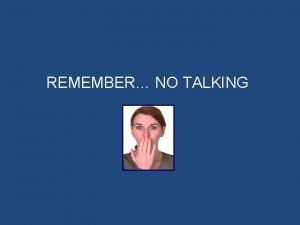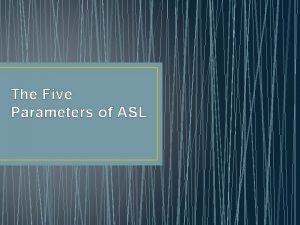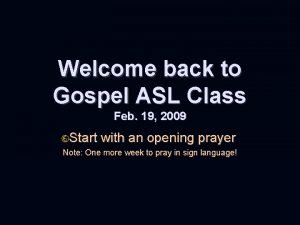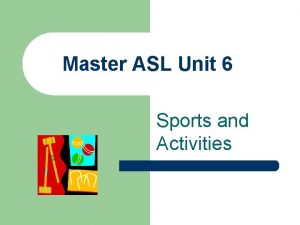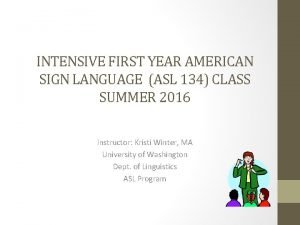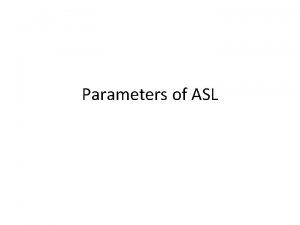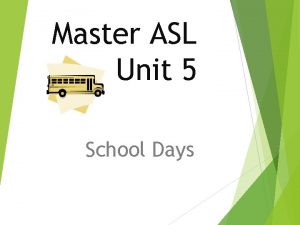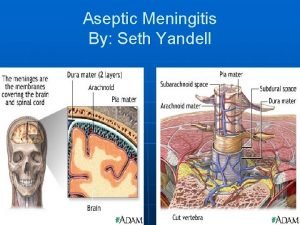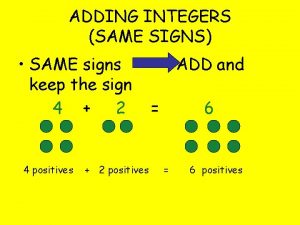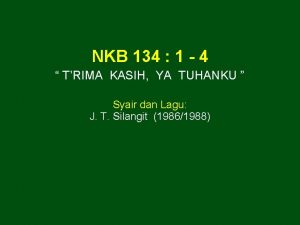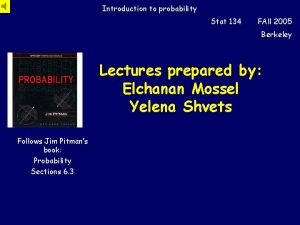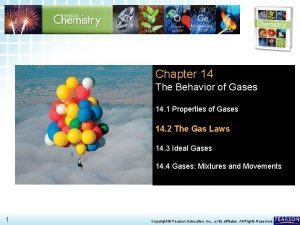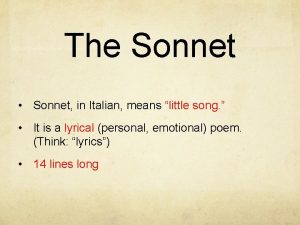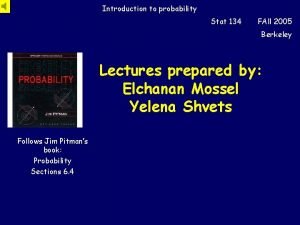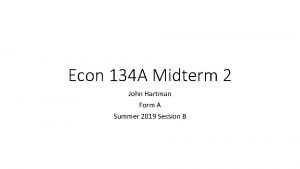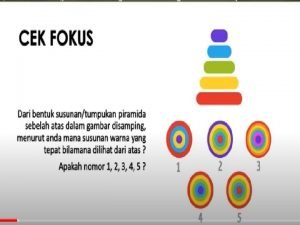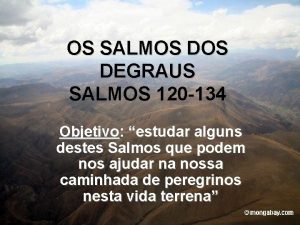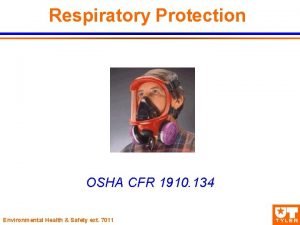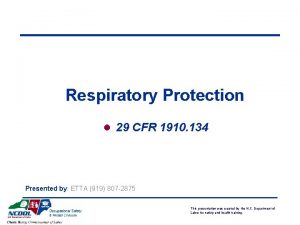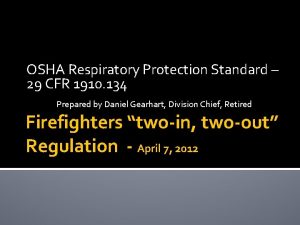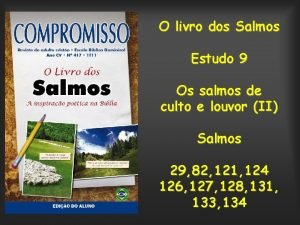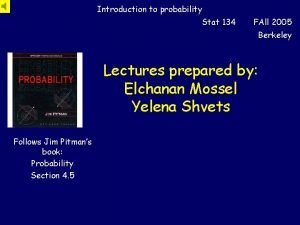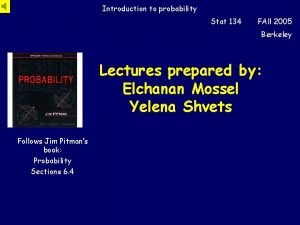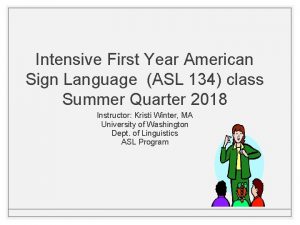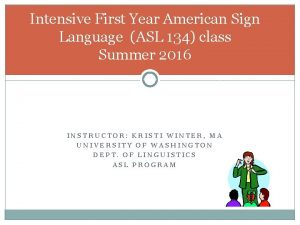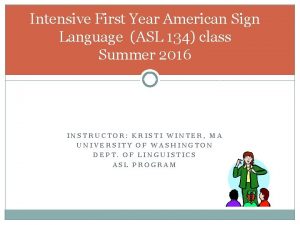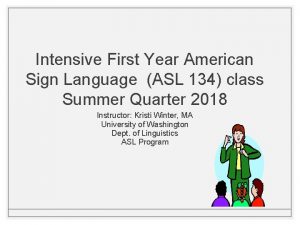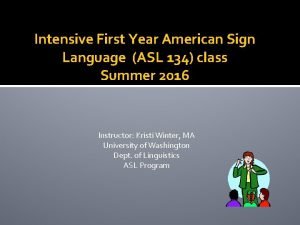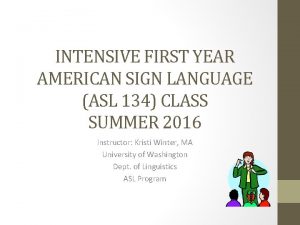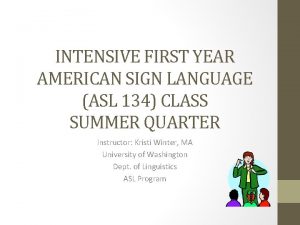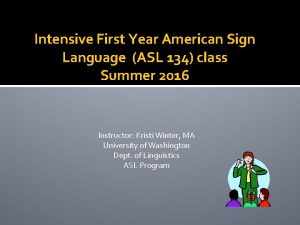INTENSIVE FIRST YEAR AMERICAN SIGN LANGUAGE ASL 134








































- Slides: 40

INTENSIVE FIRST YEAR AMERICAN SIGN LANGUAGE (ASL 134) CLASS SUMMER 2016 Instructor: Kristi Winter, MA University of Washington Dept. of Linguistics ASL Program

Agenda: Today: • • SN Unit 5 Wednesday, July 20 th • • • SN Unit 5 Signing Lunch (12: 15 pm - 12: 45 pm) Thursday, July 21 st • • • SN Unit 5 ASL Film: “Gerald”

UNIT 4 “TALKING ABOUT FAMILY”

Homework 4: 11 Ten Years Later • Answers are on page 413

Homework 4: 12 • Answers on page 414

Homework 4: 13 – David’s Keys (p. 207) 1. How many keys does David have altogether? • 11 keys 2. What are the keys for, and how many does he have for each purpose? 1. 2. 3. 4. 5. 6. 7. for his apartment – 3 keys for mailbox – 1 key bike lock – 1 key locker – 1 key workplace; front door and office – 2 keys for his and his wife’s cars – 2 keys he cannot remember – 1 key 3. Where did Iva find the keys? In the classroom 4. In what city does David lives? New York

Homework 4: 14 Commenting on Family Members • Minidialogue 1 1. What’s two comments does Stefanie make about Priscilla’s grandmother? • She’s pretty and looks young • How old is Priscilla’s grandmother? • 65 • How does Priscilla explain her grandmother’s youthful look? • Exercises; eats well; walks; has many friends. 1. To be like the grandmother, what do Priscilla and Stefanie both agree they should do? • Exercise.

Homework 4: 14 Commenting on Family Members • Minidialogue 2 1. Why can’t Iva pick out Melinda in the photo? • Melinda’s hair is different; it was 7 years ago. 2. What is the story behind the good-looking guy in the photo? • He was Melinda’s old boyfriend. They broke up when Melinda met someone else in college. 3. Is Melinda married now? Explain. • Engaged to marry next May. 4. What does Iva need to do now? • Save money to travel to Mexico for Melinda’s wedding. 5. What does Melinda suggest Iva take with her to Mexico? • Her bathing suit.

Homework 4: 14 Commenting on Family Members • Minidialogue 3 1. When and where was the photo taken? • One year ago at Cinnie’s aunt’s house. 2. What was the occasion? • Her aunt’s 75 th birthday. 3. The photo consists of. . ? • Cinnie’s family – her five children and their spouses; 4 grandchildren 4. Which child does Joey think looks like Cinnie? In what ways? • Her daughter; their smiles. 5. Does Joey have any grandchildren? • No.

Occasions

Making Comments a. c 2. f. b. d. c 1. e. g. h.

Share your family pictures. For each person tell: • how the person is related to you • person’s ranking if appropriate • the person’s marital status Others ask follow up questions such as: • person’s age • place of person’s residence and/or work • where and when the picture was taken • the occasion of the picture (ask yes/no question) Make comments about the person and/or the family.

Lesson 4: 15 – Culture: Maintaining a Clear Sightline Responsibility of Group Members The Signer: • Position yourself so others can see you The Listeners: • When sitting between a signer and another person, be aware of the other’s ability to see the signer and voluntarily move back • When sitting at the end, inform others you can’t see the signer

Unit 5 “Talking about Activities”

Lesson 5: 1 Talking about Everyday Activities

ASL Tenses

Tense • Quoted from the Master ASL! textbook, p. 231 • “All languages have ways of talking about past, present or future periods of time. Tense means distinguishing periods of time. In ASL, tense is formed by the addition of certain signs called tense markers to the beginning of a sentence that is then understood to be in the past or future tense. If there are no tense markers, then the sentence is in the present tense. ” • Zinza, J. (2006) Master ASL! Level One. Sign Media. Inc. Burtonsville, MD.

I leave at 10: 00 • Present Tense: I leave at 10: 00 • no tense marker • Past Tense: I left at 10: 00 • adding the past tense marker – PAST/AGO • Future Tense: I will leave at 10: 00 • adding the future tense marker – WILL • Zinza, J. (2006) Master ASL! Level One. Sign Media. Inc. Burtonsville, MD.

Lesson 5: 1 Talking about Everyday Activities • Does ASL have conjugated (“To be”) verbs? • If a time sign is not specified, then it is assumed that the events described are in the present tense. (p. 235) 1. The day before today; yesterday 2. Last Monday, the past Monday 3. At the present time, now, today 4. The day after “today, ” tomorrow 5. Next Friday, this Friday

July 2016 Sun Mon Tues Wed Thurs Fri Sat 1 2 3 4 5 6 7 8 9 10 11 12 13 14 15 16 17 18 19 20 21 22 23 24 25 26 27 28 29 30

Everyday Activities 1

Everyday Activities 2

WH-Word Question – WHEN (p. 232) • To ask a “when” question, do the following: 1. Name the activity 1. raise brows 2. ask “when” 1. lower brows 2. lean head forward 3. hold the last sign (WHEN)

Asking WHEN Questions • ASL structure: YOU _______ WHEN? (activity)

• Asking “when” questions My Week 1 Sun Mon Tues Wed Thurs (today) Signer A: Ask when B did/will do a certain activity Signer B: Tell when Fri Sat

Wh-Word Question – What a person did/will do (p. 234) • To ask a “what one did/will do” question, do the following: 1. name the day 1. raise brows 2. ask what person did/will do 1. lower brows 2. lean head forward 3. hold the last sign (the “what did/will do” question sign)

• asking “do” questions My Week 2 Sun Mon Tues Wed Thurs (today) Signer A: Ask what B did/will do on a certain day Signer B: Tell the activity Fri Sat

Exercise 5: 1 – Lisa’s Week (student workbook, pages 389)

Exercise 5: 2 – Joy’s Week (student workbook, pages 390)


Lesson 5: 2 Agreement Verbs • • • GIVE-TO SHOW-TO THROW-TO TAKE-FROM ASK-TO TELL-TO • Agreement Verbs - a verb that indicates the subject (the person doing the action) and the object (the person receiving the action) in its movement. Usually the verb moves from the subject towards the object. (p. 241)

Making Verbs Agree • Practice GIVE-TO, SHOW-TO, and THROW-TO • ASK-TO and TELL-TO

Making Verbs Agree in Narratives • Translation: One day after school, a little girl went home. As soon as she got into the house, she looked for her mother. Then she saw her mother and said to her: 1. Girl: (hiding something behind her back) I have a surprise for you! 2. Mom: Oh? What is it? Tell me. 3. Girl: I can’t tell you. It’s a surprise! 4. Mom: Show me? 5. Girl: hmmmm…Okay! (she hands her a bouquet of flowers) 6. Mom: Flowers! How nice! Thank you.

Lesson 5: 3 Words with Letters G and H • Fingerspelling: Words with Letters G and H Grace Gayle Doug Holly Hope Philip

Lesson 5: 4 Talking about Chores

Chores 1

Chores 2

Signer A: Ask who B lives with B: Tell who A: Ask what each person’s household chores are B: Name (up to 3) chores for each person (spatial agreement) • one other person • two other people • three other people or more A: Ask if B doesn’t mind doing his or her chores (specify which chore) B: Give opinion A: Respond

Homework for next class day: • Do homework 5: 1 -5: 4

Sources: • Smith, C. , Lentz, E. & Mikos, K. (1988)Signing Naturally Student Workbook Level 1. Dawn. Sign. Press. San Diego, CA • Smith, C. , Lentz, E. , Mikos, K. (2008) Signing Naturally Units 1 -6. Dawn Sign Press. San Diego, CA. • Zinza, Jason E. (2006) Master ASL! Sign Media, Inc. Burtonsville, MD. • Eastman, G. (1989) From Mime to Sign. T. J. Publishers, Inc. Silver Spring, MD. • Pictures from Microsoft Clip Arts
 No talking in sign language
No talking in sign language Sign sign everywhere a sign
Sign sign everywhere a sign Eyes in sign language
Eyes in sign language Names and tidbits signing naturally answers
Names and tidbits signing naturally answers 5 parameters
5 parameters Lgp sign language
Lgp sign language Asl sign for gospel
Asl sign for gospel Master asl unit 6
Master asl unit 6 Basic asl phrases
Basic asl phrases Palm orientation asl examples
Palm orientation asl examples Soda machine in asl
Soda machine in asl Hypocalcemia chvostek
Hypocalcemia chvostek Trousseaus
Trousseaus Hypermagnesemia causes
Hypermagnesemia causes Brudzinski and kernig sign
Brudzinski and kernig sign Same sign add and keep
Same sign add and keep Pentecost meaning
Pentecost meaning Year 6 leavers assembly poem
Year 6 leavers assembly poem Difference of first language and second language
Difference of first language and second language Language
Language Trimakasih ya tuhanku
Trimakasih ya tuhanku Hbu 117 uitm
Hbu 117 uitm Stat 134 berkeley
Stat 134 berkeley Ctb art 134
Ctb art 134 Sec. 8 of r.a. no. 6132
Sec. 8 of r.a. no. 6132 A sample of neon gas occupies a volume of 677 ml at 134 kpa
A sample of neon gas occupies a volume of 677 ml at 134 kpa Italian word sonneto which means little song.
Italian word sonneto which means little song. 1910 134
1910 134 Stat 134
Stat 134 Econ 134
Econ 134 108 + 132 dikurang 134
108 + 132 dikurang 134 1910 134
1910 134 Salmos dos degraus
Salmos dos degraus Osha 1910 respiratory protection
Osha 1910 respiratory protection Optisanitas reina sofia
Optisanitas reina sofia 1910 134
1910 134 Osha two in two out
Osha two in two out Osha 1910 respirator
Osha 1910 respirator Quão bom e quão suave estudo
Quão bom e quão suave estudo Stat 134
Stat 134 Stat 134
Stat 134
